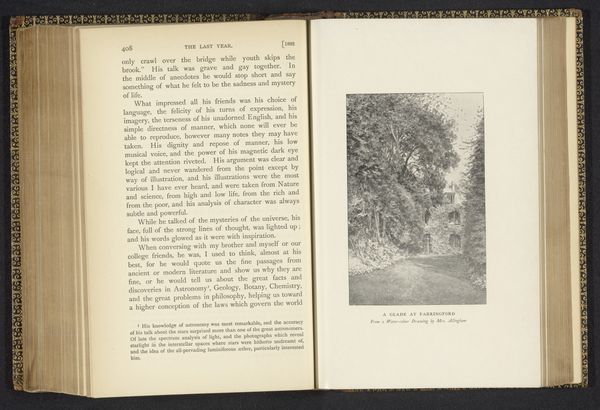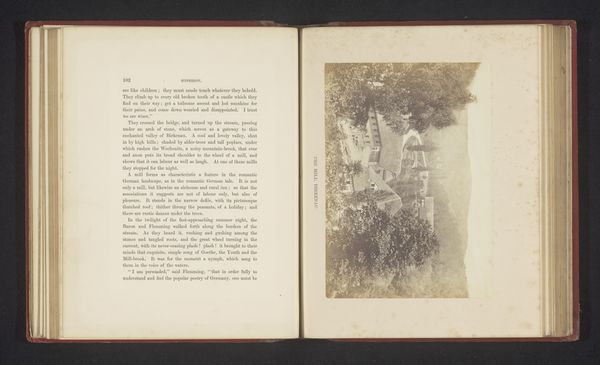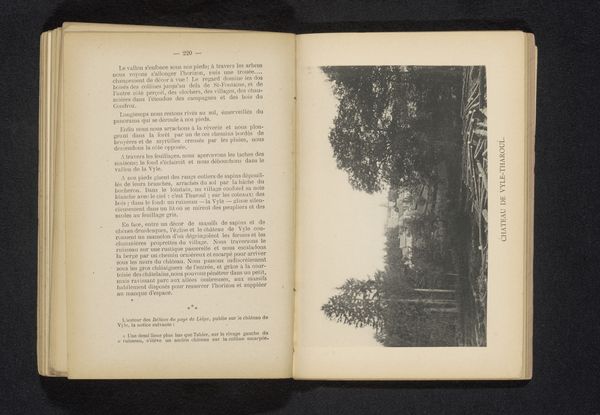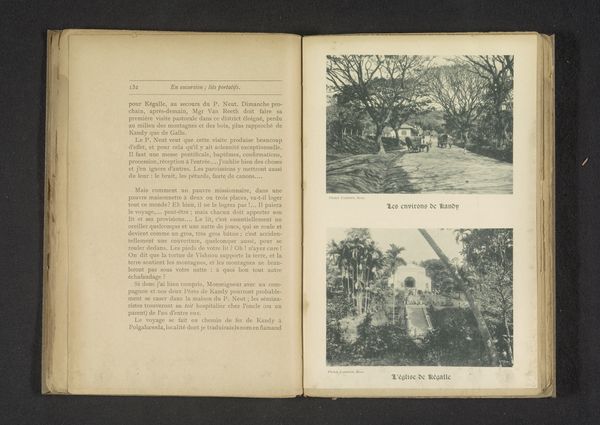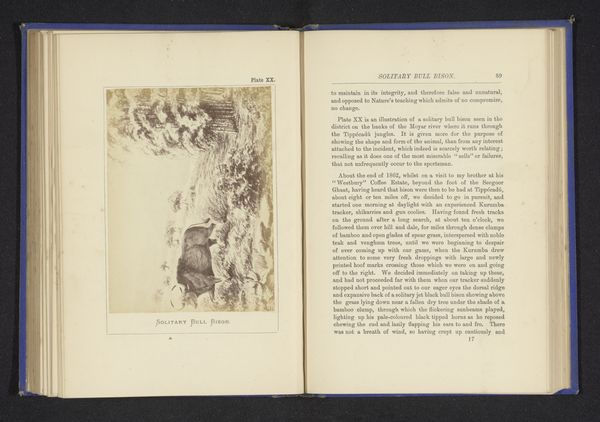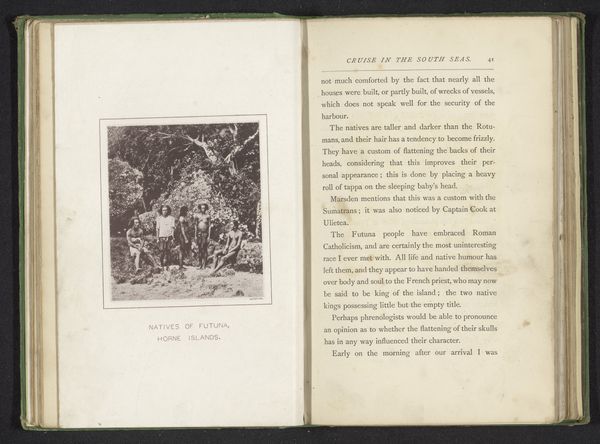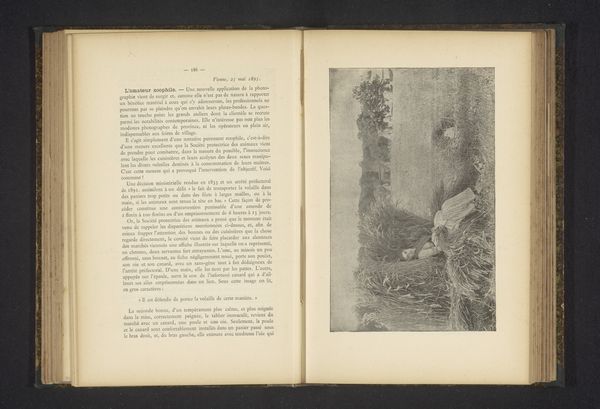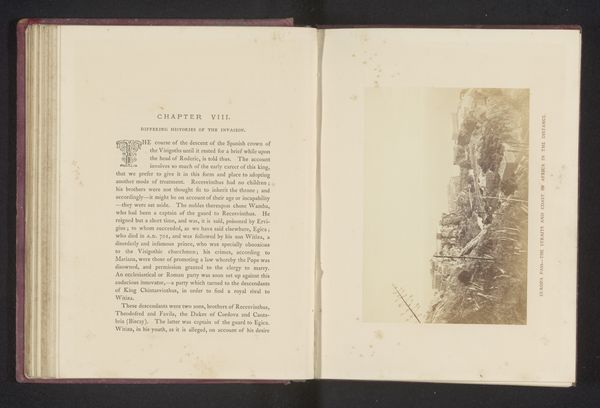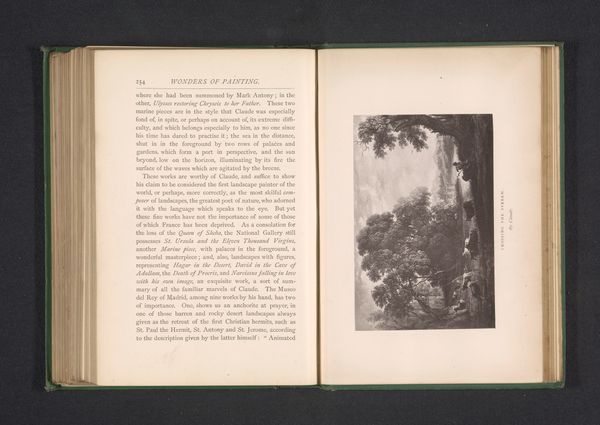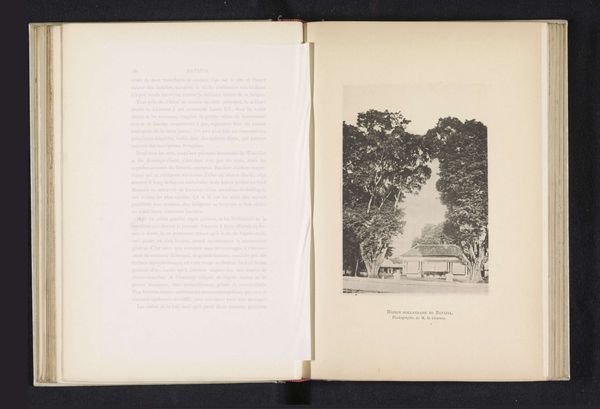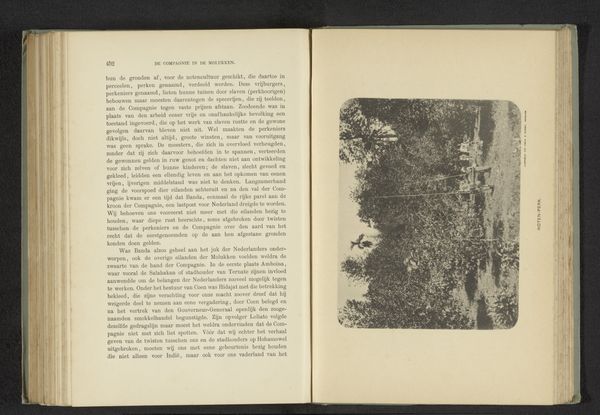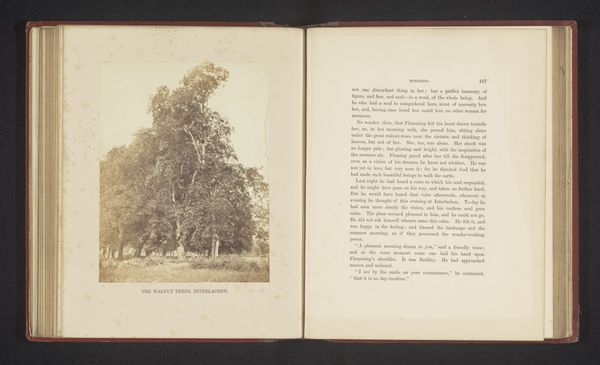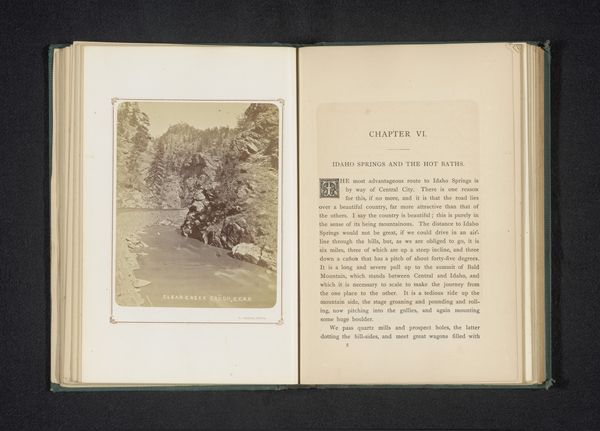
Dimensions: height 100 mm, width 140 mm
Copyright: Rijks Museum: Open Domain
Curator: Standing before us is an albumen print titled "Gezicht over de Theems bij Clifton Hampden" - or "View of the Thames at Clifton Hampden" - by Francis Frith, dating back to before 1867. It's currently housed here at the Rijksmuseum. Editor: It has such a quiet, melancholic feel. The hazy tones and vertical composition give it a sense of contemplative stillness, almost like looking back through time. Curator: Absolutely. Frith was a master of composition. Observe how the river acts as a strong central axis, flanked by those trees. This structural arrangement emphasizes the photograph's balance and harmony, consistent with pictorialist ideals that seek to mimic painting through soft focus. Editor: And yet, the romantic framing also speaks to the power dynamics inherent in landscape photography of this era. It's about more than aesthetics, isn't it? Whose "view" are we really seeing? Frith, as a member of the privileged class, romanticizes a landscape largely shaped by agricultural and colonial exploitation. The tranquil river, idealized for its beauty, was also a vital trade route inextricably tied to British imperialism. Curator: It’s fascinating how you've unearthed those layers. Indeed, the surface calm masks complex socio-political currents. But considering just the formal qualities, the varying shades create depth, drawing the eye further into the image, making it much more than just a static recording. Editor: I agree about the surface appeal. But it's impossible to ignore the historical context that seeps into these landscapes. Pictorialism aimed to elevate photography to art, but that pursuit of "artistic" value sometimes overshadowed the realities lived by the people whose labor shaped that landscape. Curator: A poignant observation. I suppose what remains vital is our capacity, as viewers, to appreciate its visual mastery whilst simultaneously reflecting on its broader socio-political implications. Editor: Precisely. It encourages a deeper inquiry into both what is visible and what remains unseen, a critical exercise for art of any period.
Comments
No comments
Be the first to comment and join the conversation on the ultimate creative platform.
